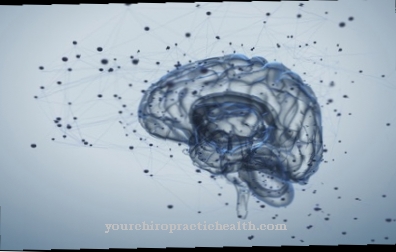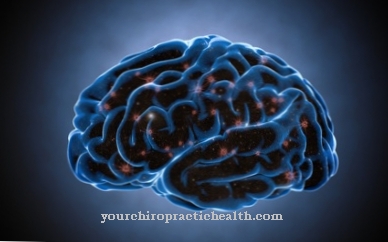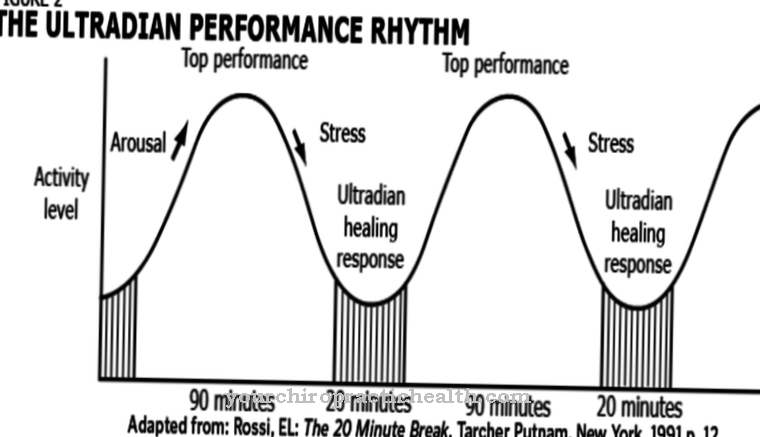Of the Oxygen transport represents a physiological process in the organism in which oxygen is transported from the alveoli to all body cells. Complex physical and chemical processes take place that are closely linked to one another. If these processes are disturbed, the body may be insufficiently supplied with oxygen.
What is oxygen transport?

To generate energy in the organism, carbohydrates, fats and proteins are oxidized. This oxidation is also known as combustion and requires oxygen as a reactant. However, oxidations must take place in all body cells to generate energy, so that there is a need to transport the oxygen in the air required for this from the lung alveoli evenly to all areas of the body. This can only be done by transporting oxygen.
The oxygen transport depends on certain physical and chemical influencing variables and factors. There are two possible forms of transport. Most of the oxygen is reversibly bound to an iron atom in hemoglobin via a complex bond. To a lesser extent, oxygen can also be dissolved directly in the blood plasma.
The oxygen diffuses from the pulmonary alveoli (alveoli) into the blood plasma. The higher the partial pressure in the alveoli, the more oxygen gets into the blood. The oxygen-rich blood first flows into the left ventricle and from there is transported as arterial blood via the arteries to the target organs and target cells.
Both the reversibly bound to hemoglobin and the oxygen freely dissolved in the blood plasma are released there and reach the individual cells. This is where the combustion product carbon dioxide is created, which, together with the unused oxygen, returns to the pulmonary artery via the venous bloodstream. In the lungs, carbon dioxide is released and exhaled, and at the same time new oxygen is taken up in the blood via the alveoli.
Function & task
The most important function of oxygen transport is to distribute the inhaled oxygen evenly to all body cells. This represents the greatest challenge of oxygen transport.
In the body's cells, the energy sources carbohydrates, fats and proteins are oxidized with the release of energy. The energy sustains all life processes. If the supply of oxygen were to be stopped, the affected cells would die. When there is a higher need for oxygen, such as during physical work, more oxygen has to be transported than during rest phases.
In such a case it is necessary that the difference in the concentration of oxygen between the pulmonary alveoli and blood plasma must be higher than when the demand is lower. The breathing and heart rates increase accordingly. The oxygen partial pressure increases. In this way, more oxygen is dissolved in the blood plasma or bound in the hemoglobin.
Hemoglobin forms complex compounds with iron, which can bind even more oxygen molecules after the first oxygen molecule has been absorbed. The basic unit of hemoglobin, the heme, is an iron (II) complex with four globin molecules. The iron atom of the heme can bind up to four oxygen molecules. When the first oxygen molecule is bound, the conformation of the heme is changed in such a way that further uptake of oxygen is made even easier. The color of the hemoglobin changes from dark to light red.
The loading of the hemoglobin depends on several physical and chemical factors that are closely related. There is a cooperative effect which manifests itself in an increasing oxygen affinity of the hemoglobin with its higher loading.
A low pH value with a high carbon dioxide partial pressure, however, favors a complete release of the oxygen from the hemoglobin. The same applies if the temperature rises. The changes in these physical conditions take place within the scope of different activity states of the body, so that the oxygen supply of the organism is optimally coordinated with a normally functioning oxygen transport.
You can find your medication here
➔ Medication for shortness of breath and lung problemsIllnesses & ailments
If the body is no longer optimally supplied with oxygen, it can lead to functional restrictions and failure of the affected organs. Oxygen cannot be stored in the body. Therefore, the active oxygen transport must be constantly maintained for all life processes. However, if the oxygen supply is only interrupted for a few minutes, irreversible organ damage or even organ failure are often the result.
An optimally functioning blood circulation is a prerequisite for the smooth transport of oxygen. Disturbances of the circulatory system due to arteriosclerotic vascular changes, blood clots or blockages can significantly impair the oxygen supply to the body.
If the blood vessels are narrowed, the blood pressure rises in order to keep supplying the organs with oxygen. In the event of a heart attack, stroke or pulmonary embolism, the blood supply and thus the oxygen supply can be completely blocked.
Other causes for an insufficient supply of oxygen to the body are various heart diseases that are associated with a reduction in pumping capacity. These include general heart failure, cardiac arrhythmias or inflammatory heart diseases. Ultimately, this means that not enough blood can reach the relevant target organs.
However, an insufficient supply of oxygen to the organism can also result from blood diseases or certain types of poisoning. For example, the carbon monoxide molecule competes with the oxygen molecule for the binding sites in hemoglobin due to a similar molecular structure. Carbon monoxide poisoning is therefore nothing more than an insufficient supply of oxygen, which can lead to death from suffocation.
Furthermore, there are various genetic blood diseases that affect the structure of hemoglobin and cause chronic oxygen deficiency. Sickle cell anemia can be mentioned here as an example. Other forms of anemia (anemia) also result in a constant lack of oxygen.



























